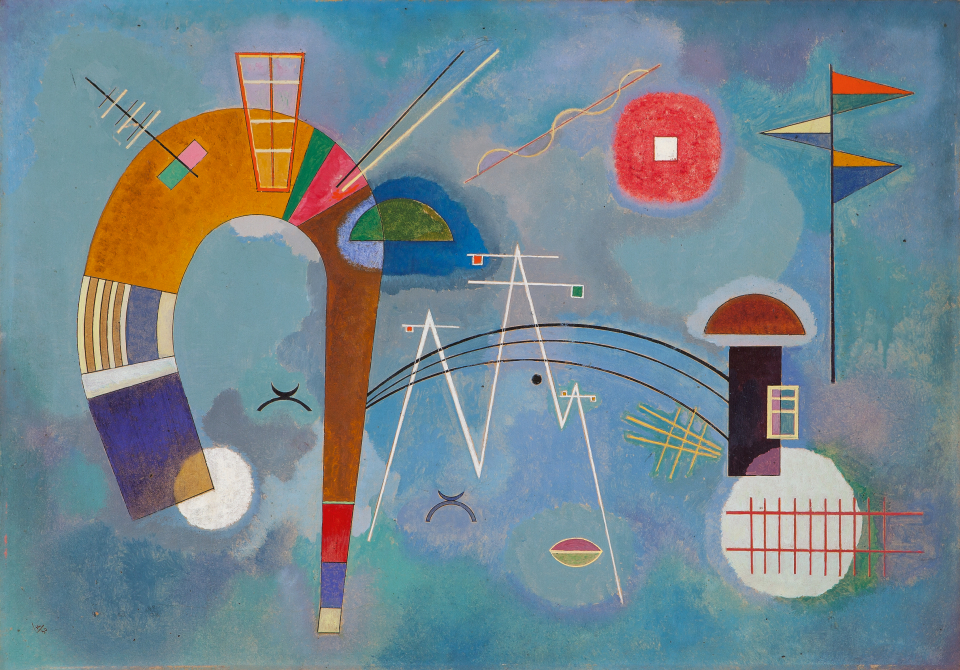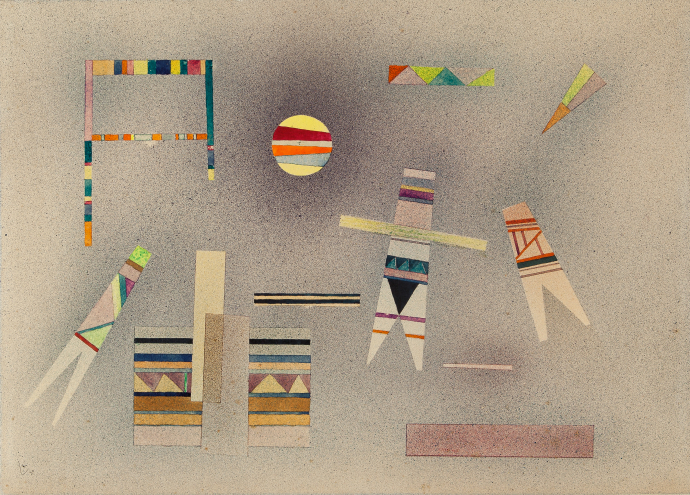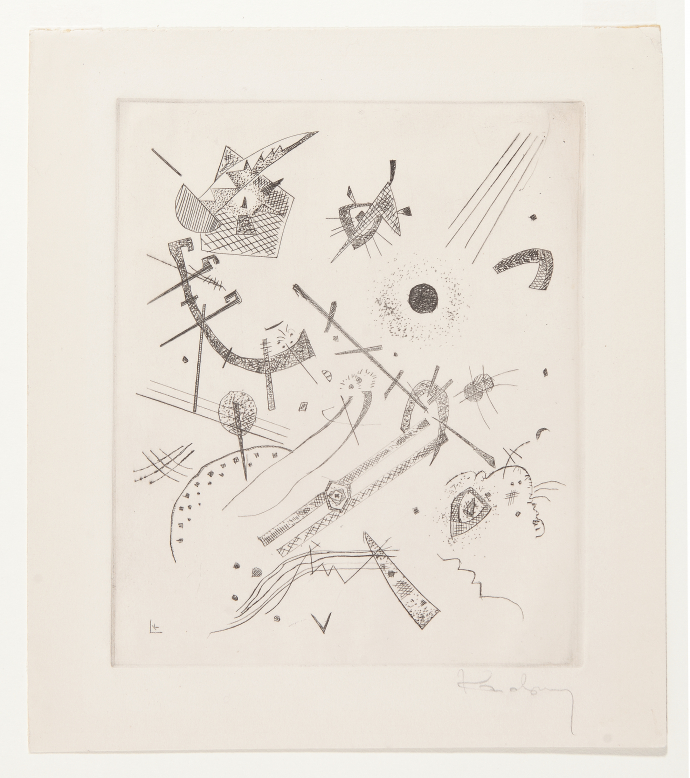Jugendstil-Bau > Ebene 1 > Galerie 17
Intro
Flags and mountains? Or just an arrangement of arbitrary forms? During his time as a teacher at the Bauhaus (1922–33), Wassily Kandinsky engaged in an intensive exploration of the foundations of painting. He not only examined form in itself—geometric figures such as lines, circles, triangles, and rectangles—but also the dynamic generated by the apparently chance arrangement of elements.
As the title of his painting implies, his aim here is to explore the relationship between round and pointed forms. The picture remains abstract, although a number of its elements are reminiscent of flags or the outlines of mountains. Yet despite all the abstraction, Kandinsky’s picture possesses dynamism and tension, movement and intensity.
The Moscow-born painter was convinced that even these basic forms “have their own life,” their own artistic quality. The experiments in form and color by the cofounder of the Munich-based artists’ group Blue Rider point to his role as a pioneer of abstract art, which—due to the ban imposed by the Nazis—could only establish itself in Germany after World War II.
Kunsthalle Mannheim
Transkription
Is it a multicolored walking stick with a red-and-yellow window frame? A mountain range with flags? Next to it there is a mushroom with a yellow window upon a greenish-white ball, connected to those white spikes by three black arched lines. A red ladder is leading above it – or is it a fence? Taken realistically, this oil painting on carton would be a 50 by 70 cm landscape with wind blowing from all directions.
But this is not what the title „Curved and Pointed “ implies. Moscow-born painter Wassily Kandinsky is engaged in an interplay of shapes, a combination and conflict of contrasts, a comparison of well-defined color surfaces with blurred ones. Above all, he is interested in the dynamics which are created by intersecting structures.
The painter, graphic artist and art theoretician was born in 1866. He co-founded the Neue Künstlervereinigung München in 1909, and split away from it in 1911 with the „Blaue Reiter“ group. In 1930 when he created „Curved and Pointed “, he had long since left behind all Impressionism and Expressionism. He is regarded as a pioneer of Abstract art.
„Abstract art“, so his summary in 1938, „dispenses with objects and their processing. It creates its expressive shapes all by itself.“ That was a huge break with western painting traditions!
Kandinsky did not strive towards representing real, existing figures or landscapes any more. He wanted to portrait the reality within an image, disconnected from actual reality. As a synesthete he heard, saw and smelt color. He developed a kind of grammar in which he associated „color sounds“ with instruments. There was no fear of any of the old masters of art history: „A vertical line connected to a horizontal one creates an almost dramatic sound. The acute angle of a triangle touching a circle actually has no less effect than the finger of God touching that of Adam in the Michelangelo mural.“


![Braune Spannung Signatur: monogr. und dat. u.li.: "K // 28": Beschriftung recto: auf Trägerkarton in Bleistift u.li.: "324"; u.re.: "1100,-": Beschriftung verso: auf Trägerkarton in Bleistift o.re.: "3500,-"; u.re.: "324 [unterstrichen] // 1928", "32"](/sites/default/files/styles/700_breit/public/digitalisate/G3872_MOS_2018.jpg?itok=oZa4SKAO)
